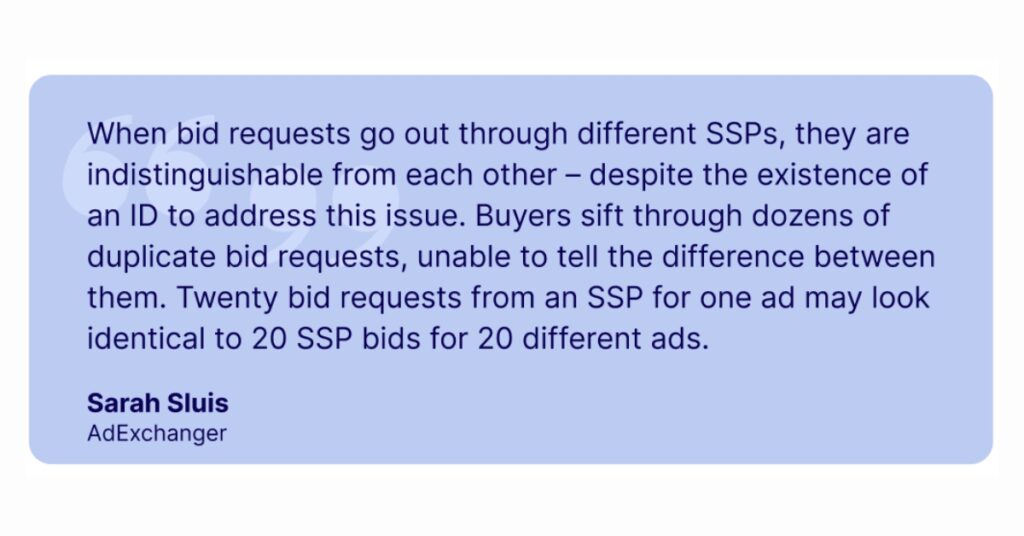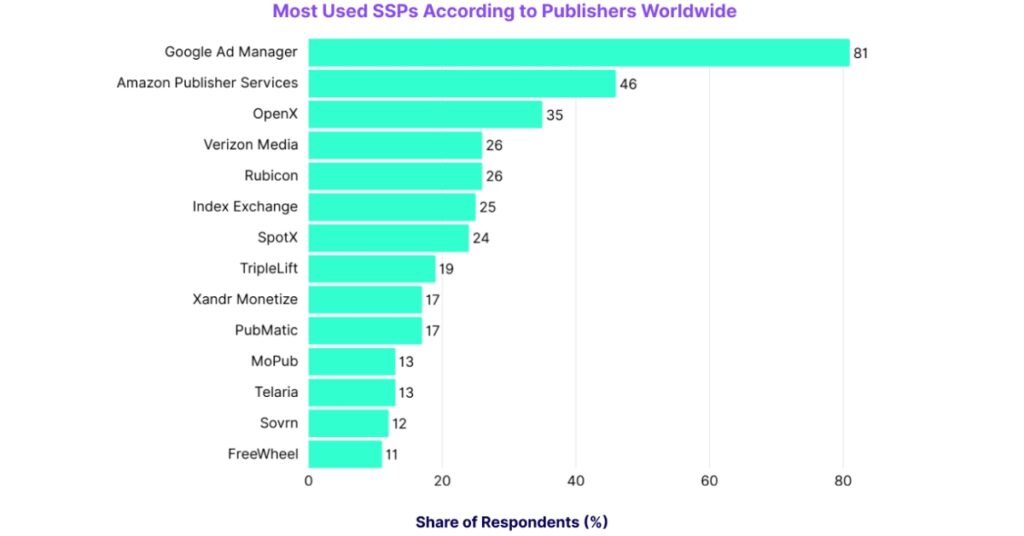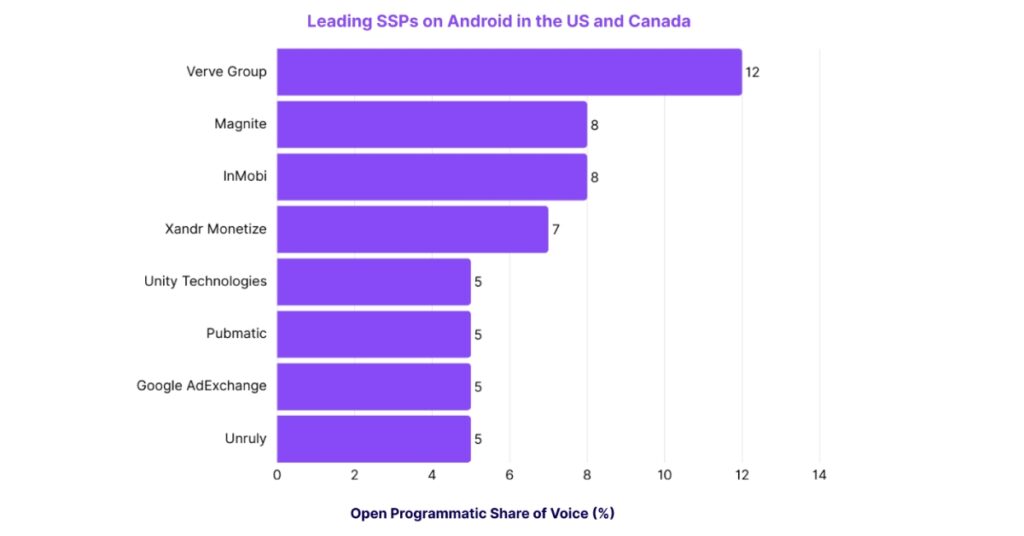Successful SSP management requires publishers to strategically evaluate each supply-side platform in their header bidding setup, focusing on quality over quantity to reduce bid duplication and latency while strengthening yield management, improving auction efficiency, and maximizing overall ad revenue optimization.
Introduction
Supply-Side Platforms (SSPs) have evolved significantly since their inception.
Initially, they served as mere conduits, connecting publisher inventory to Demand-Side Platforms (DSPs). SSPs need to offer advanced features such as handling high traffic volumes, multi-server connectivity, premium inventory support, and analytics.
But as these platforms become more sophisticated, the real question is not the total number of SSPs in your header bidding stack, but whether each partner truly deserves their place.
With digital ad budgets tightening, SSPs can no longer rely on hyperbolic claims. They must deliver real performance that publishers can trust. Publishers are seeking transparency, smarter technology, and reliable collaborations.
This shift is evident in the slight decrease in the average number of SSPs integrated into a publisher’s header bidding wrapper over the past few years.
Instead of focusing on multiplying competition, publishers now ensure that the platforms they are connected to bring in worthwhile revenue.
This article is the first of a two-part series designed to help publishers make data-driven, strategic decisions about their SSP stack.
Our goal is to show how running a faster, leaner, and smarter header bidding wrapper improves efficiency and maximizes Ad Revenue Optimization across all inventory types and formats.
The Cost of Too Many SSPs
Duplicate Demand & Noise
Many SSPs are connected to overlapping demand sources. This presents an issue: when multiple Supply-Side Platforms send near-identical bid requests to the same DSPs, the result is not stronger competition but duplicated noise.
Dozens of indistinguishable requests vie for the same impression, leading to inefficiency. DSPs cannot filter them in real time, so they either waste compute power trying to, or use blunt techniques that discard valuable bids in the process, both of which work against effective Ad Revenue Optimization.
Some SSPs also optimize for the wrong priorities: rather than maximizing the value delivered to publishers, they focus on revenue per impression, chasing volume over quality.
This misalignment can negatively impact yield management and overall Ad Revenue Optimization.
Smart Supply-Side Platforms balance multiple factors at once, adjusting floor prices based on visitor value and the quality of the inventory available, and rejecting low-quality demand even when it comes at a short-term cost.
Success comes not from the number of SSPs you work with, but from the quality of the demand they bring. This principle is crucial for publishers managing high volumes of traffic across multiple regions and devices.

Strategic Evaluation of SSPs
Evaluation is crucial. Publishers should assess each Supply-Side Platform’s performance, considering factors such as fill rates, CPMs, latency, and user experience.
Platforms like Opti Digital assist in this evaluation process by providing insights into SSP performance, enabling publishers to make informed decisions about which SSPs to retain in their stack.
Targeted Optimization with SSPs
With a careful, data-driven approach, publishers can improve auction efficiency and maximize yield.
Context
SSPs do not perform the same way across markets, devices, or browsers. Global popularity can give a general sense of which Supply-Side Platforms are widely used, but it does not guarantee optimum performance in every context.

For example, on Android in the US and Canada, platforms such as Verge Group, Magnite, and InMobi lead in mobile performance, as measured by their open programmatic share of voice, while globally dominant SSPs like Google Ad Manager remain relevant but lose their top rank.

Publishers need to evaluate which SSPs bring the most valuable demand in each context, ensuring that auctions include partners that contribute meaningful bids and drive revenue, rather than just increase latency.
This is essential for effective Yield Management and Ad Revenue Optimization.
Granular Insights for Optimization
Publishers need granular, segment-level insights broken down by ID, device, platform, region, and ad format to understand which Supply-Side Platforms deliver meaningful demand.
Targeted optimization ensures that only SSPs capable of performing effectively are included in each auction, resulting in faster, cleaner auctions, more accurate reporting, and higher revenue efficiency.
Focusing on efficiency over quantity allows publishers to maximize competition where it matters most; it is a practical Yield Management and Ad Revenue Optimization strategy.
Targeted optimization also enables better planning for seasonal or regional traffic shifts, ensuring that the most effective SSPs are prioritized when competition is high.
Key Takeaways
Publishers must approach SSP management strategically.
The temptation to add more partners for the sake of volume is understandable, but more does not always mean better. In fact, too many SSPs can harm performance by creating bid duplication, increasing latency, and negatively impacting Ad Revenue Optimization.
The solution lies in evaluation and targeted optimization.
By reviewing Supply-Side Platforms segment by segment, publishers can ensure each SSP contributes meaningful demand. This strategy strengthens Yield Management, improves auction efficiency, and enhances reporting accuracy.
For publishers aiming to run faster, leaner, and smarter header bidding wrappers, the focus must be on the right SSPs rather than the most SSPs.
Partners like Opti Digital offer the guidance and tools needed to implement these strategies effectively, ensuring every connection adds measurable value.
Stay tuned for part 2, where we’ll dive deeper into SSP performance analytics and Supply Path Optimization (SPO). You’ll discover which KPIs truly reflect SSP value, how to interpret them, and how SPO helps publishers streamline demand paths for greater efficiency and profitability.
FAQs
There is no fixed number. Publishers should connect only the SSPs that bring meaningful demand and perform well across different devices, regions, and ad formats. Remember – quality over quantity!
Yes. When multiple SSPs send overlapping or duplicate bid requests, it increases noise in auctions rather than driving real competition. This can slow auctions, reduce efficiency, and negatively impact revenue.
Targeted optimization improves auction efficiency, strengthens yield management, and ensures that each impression contributes real revenue, making the header bidding stack faster, leaner, and smarter.






